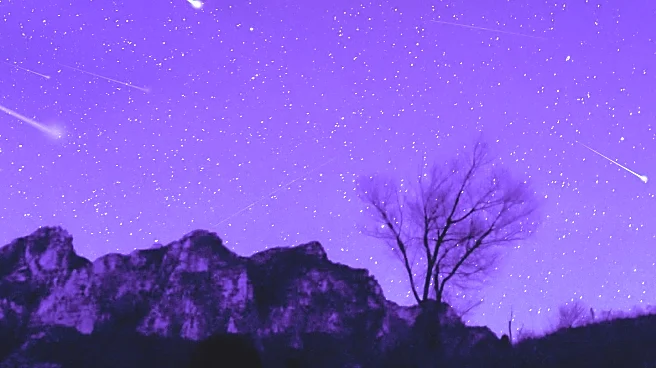What's Happening?
The Orionid meteor shower, originating from debris left by Halley's Comet, is set to peak during the third week of October. This year, the shower coincides with a new moon phase on October 21, providing optimal viewing conditions without lunar interference.
The Orionids, known for their fast streaks and occasional fireballs, can be observed equally well from both the Northern and Southern Hemispheres. The radiant point of the shower is located near the star Betelgeuse in the constellation Orion, which rises high in the sky during the early morning hours. Observers are advised to look about 30 degrees away from the radiant for the best chance to see meteors.
Why It's Important?
The Orionid meteor shower offers a unique opportunity for skywatchers to observe remnants of Halley's Comet, one of the most famous comets in history. The shower's visibility from both hemispheres makes it accessible to a wide audience, promoting interest in astronomy and natural phenomena. Additionally, the absence of moonlight during the peak enhances the visibility of fainter meteors, making it an ideal event for amateur astronomers and enthusiasts. This celestial event underscores the ongoing influence of Halley's Comet, which last visited the inner solar system in 1986 and will return in 2061.
What's Next?
As the Orionid meteor shower continues, observers can expect to see meteors until early November. The shower's peak on October 21 is the best time for viewing, but meteors may still be visible in the days following. Skywatchers are encouraged to find dark, rural locations to minimize light pollution and maximize their viewing experience. The event may inspire further interest in upcoming meteor showers and celestial events, fostering a greater appreciation for astronomy.
Beyond the Headlines
The Orionid meteor shower highlights the enduring legacy of Halley's Comet, which has been shedding debris for centuries. This event serves as a reminder of the dynamic nature of our solar system and the ongoing interactions between celestial bodies. The shower's occurrence during a new moon phase also emphasizes the importance of timing and environmental conditions in astronomical observations.
















